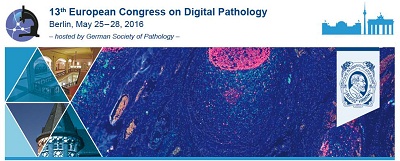Comparison of Digital and Conventional Measurements of the Morphometric Prognostic Parameters in Cutaneous Melanoma
Abstract
Introduction/ BackgroundMeasurements for Breslow and TNM staging on proliferations naevi and melanomas are required both by surgeons and patients, with direct interest in terms of prognosis and therapy. The advantages of digital
measurements are: less time consuming, the ability to measure longer distances easy, as the possibility to
extract meaningful images for clinicians, as they raise the question on the accuracy of the data supplied compared with those obtained in traditional transmission microscopy.
Aims
Cross comparison between conventional optical micrometer measurements versus whole scanned
histological sections on paraffin tissue with malignant melanoma or naevi.
Methods
Digital measurements were performed on a series of cases of melanoma and nevi (n = 15) quantifying peripheral margins, deep margin, maximum tumor thickness, including the degree of invasion. Measurements were performed on standard HE staining sections, using Leica equipment (Aperioscan 2) and AperioImageScope 12.2 as software. Data were compared pursuing the gap between the two types of measures and the impact on TNM staging.
Results
The median numerical differences between the two measurements was low (between 0.003 and 0.023mm), the maximum registered was for depth of invasion. The variability was interpreted as human factor and training variability in taking measurements (most fluctuating - maximum invasion point). They have no significant impact in TNM staging scale Breslow and digital measurements allow quantification of border areas, but with uncertain impact if we consider the tissue processing techniques induced changes. Digital measurements are advantageous because of its simplicity and speed, as well as calibration and standardization opportunities to reduce reading errors.
Downloads

This work is licensed under a Creative Commons Attribution-ShareAlike 4.0 International License.
Authors who publish with this journal agree to the following terms:
1. Authors retain copyright and grant the journal right of first publication with the work simultaneously licensed under a Creative Commons Attribution License that allows others to share the work with an acknowledgement of the work's authorship and initial publication in this journal.
2. Authors are able to enter into separate, additional contractual arrangements for the non-exclusive distribution of the journal's published version of the work (e.g., post it to an institutional repository or publish it in a book), with an acknowledgement of its initial publication in this journal.
3. Authors are permitted and encouraged to post their work online (e.g., in institutional repositories or on their website) prior to and during the submission process, as it can lead to productive exchanges, as well as earlier and greater citation of published work (See The Effect of Open Access).
4. In case of virtual slide publication the authors agree to copy the article in a structural modified version to the journal's VS archive.








